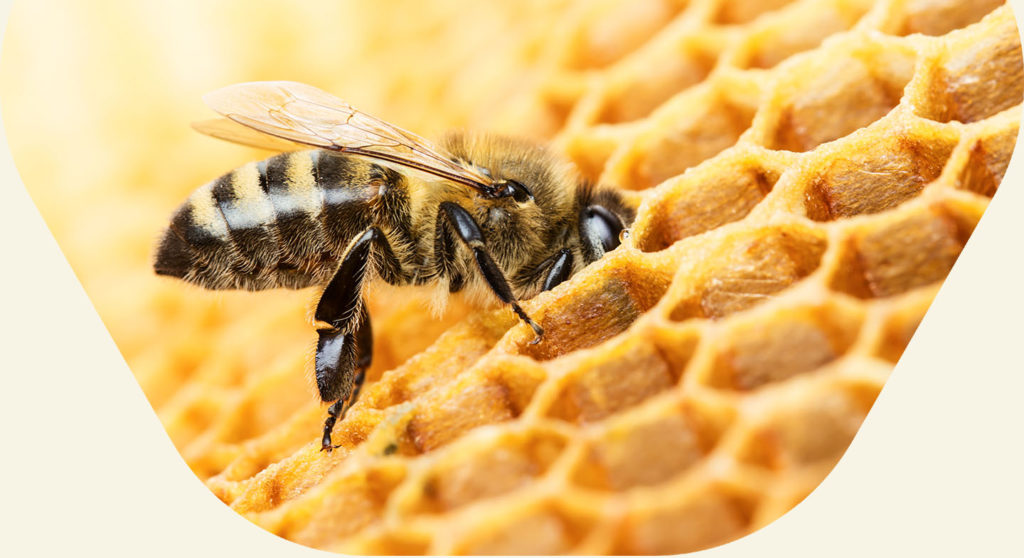API of the Month
Mathieu Domecq
Editor-in-chief of the API blog of the month
April is a very busy month for beekeepers. They are very often needed by their bees, especially when they have a lot of apiaries, which involves lots of movement. Together we shall look at the month’s work to be planned before focusing on the queen and the drone in this article.
Did you know that a swarm can reach almost 80,000 bees at the moment? This is a sign of overpopulation. A swarm may be forming for the bees and it is a race against time for the beekeeper.
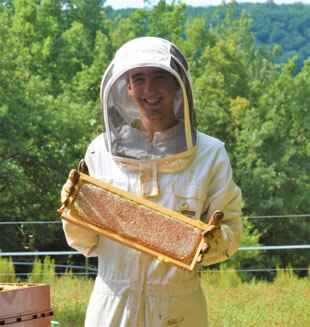
This month’s work
This month, beekeepers have a lot to do on their hives! It is now the most important time to monitor them in the season. What you need to do:
– Monitor the number of brood frames: this will determine the development of your colony. From 6/7 brood frames, you should be wary of swarming. The colony is hemmed in and may soon have queen cells.
– Place the super: with the first blossoms such as fruit trees, willows, lilac and rapeseed, there is lots of nectar coming into the hive. Care must be taken to ensure that the alveoli intended to receive the brood are not used as a reserve. The queen no longer knows where to lay and this increases the risk of swarming. Therefore place the super to make room and keep an eye on it. Sometimes it takes just one to two weeks to fill it up!
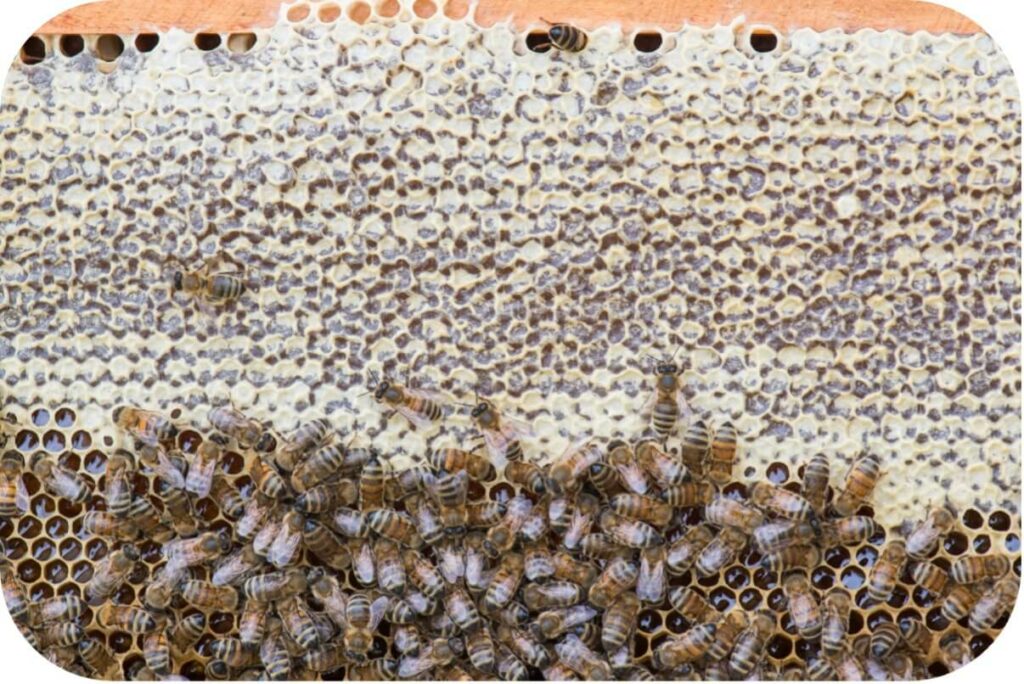
– Divide your colonies so as not to be caught unawares by a swarm – instead, anticipate it! You are going to be able to create a new swarm from a populous beehive. Select three frames that you will place in a partitioned beehive and then feed with Apiinvert® syrup. The frames will contain honey and pollen, open broods with eggs, and closed broods to follow the next births. Shut this division in 2–3 days before returning it to the hive, or move it more than 3 km away.
Then place new waxed frames in the beehive to replace those you took. With this method, you do not necessarily need to find the queen, but, if you see it, leave it in its original hive.
The fine spring days will allow you to carry out this exercise without disturbing the bees or making them aggressive.
– Expel swarms: in this swarming period you may encounter swarms along your path or be called to recover a colony that has stopped on the way, on a tree or fence. Keep a small hive and a brush in your car! This swarm will allow you to increase your colony. Nevertheless, closely monitor its health status and the queen’s genetics (aggressiveness, ageing queen laying in a mosaic, etc.).
Find the queen!
It is well-known that the queen is the basis for the development of the beehive with more than 2,000 eggs laid per day! If not marked by the beekeeper, she is not always easy to find. To make things easier, you can add a splash of colour or varnish to it, which will make it more visible and help us give it an age. A universal colour code is applied based on the last digit of the queen’s year of birth. This year it is red: 2023 = red

Otherwise, you need to be patient! But for those who are used to beekeeping, it is easy to spot, believe me. It is longer than a bee, has thick legs and a non-hairy thorax. You will find it on the open brood frames, where there are larvae and eggs. Keep an eye on the frames!
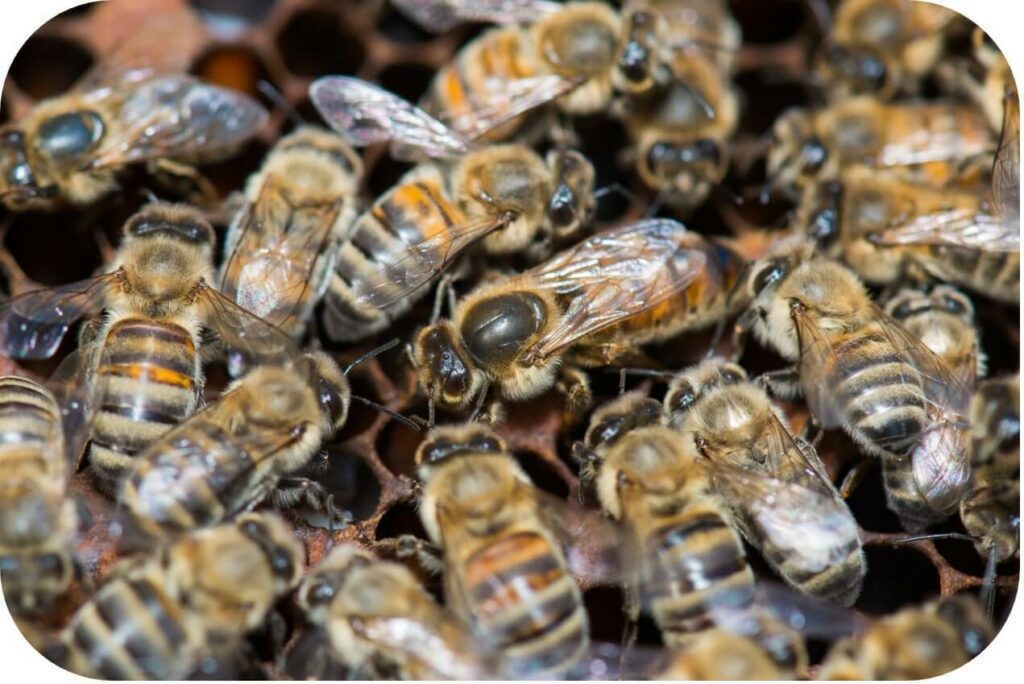
Everything you need to know about drones!
They are often said to be useless… but that is a complete misconception. Known as the drone, it is the hive’s male, accounting for around 1,500 out of 50,000 bees in spring. It is much bigger than a bee, with large globulous eyes and is thick and covered in hair.
It can also be recognised by its buzzing sound. Its flight is also loud and clumsy.
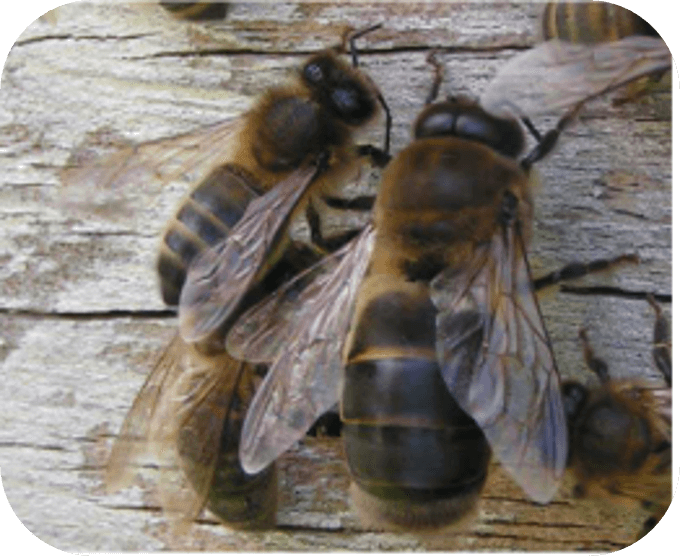
The drone takes 24 days to be born, which is the longest cycle in the hive. The egg and then larva cycle is the same as for bees. It stays in the nymph stage for longer.
Unlike the worker bees, males are unable to feed on their own in the first few days. They will be helped by the bees feeding them brood food and honey. Once well developed, they will feed themselves from the honey reserves.
The role of the drone is mainly to pass on the genetic heritage of its queen (its mother) to the new queen during fertilisation. It will have reached sexual maturity between the twelfth and fifteenth day after birth, remaining fecund until the end of its life, i.e. approximately 50 days.
On a fine day (low wind, good light and temperature above 18°C), the males of many beehives will be in a nuptial flight area (sometimes nearly 20,000 individuals), looking for young queens. The queens will be fertilised by 15 to 20 different males. Males who have been lucky enough to fertilise the queen die a few minutes later.
At the end of the season, in around September-October, the drones are chased out of the beehive. They no longer hold any benefit for the season and take up the reserves for the winter, so the bees eliminate them.
In April, you will find a lot of them in the beehive, which is normal. The males’ alveoli are recognisable by their size, are more outwardly curved than those of a worker bee and are often placed at the bottom of the frame over the entire length.
As usual, share your photos with us. They will be posted on our website from social media using the hashtag: #apifonda #apiinvert!
We shall be back next month on your API blog with your faithful partner, Les Ruchers De Mathieu!

LES RUCHERS DE MATHIEU
Honey & Beekeeping Shop
Photos ©lesruchersdemathieu
